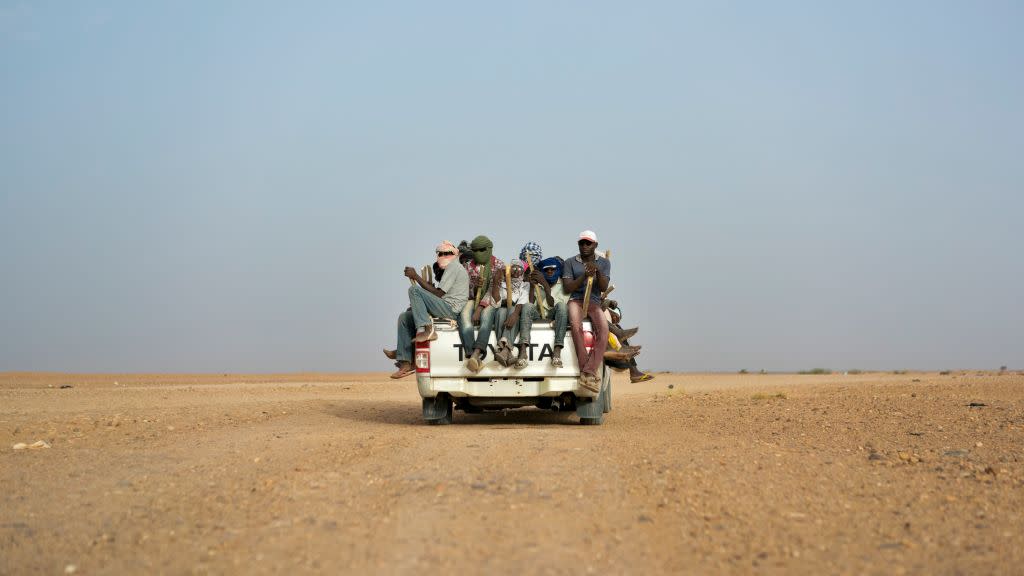The EU claims the migrant crisis is over in Europe—that doesn’t mean it’s over

The European Union recently ran a campaign advertising the efforts it has taken to ensure that “Europe is longer experiencing the migration crisis” of 2015. While it’s true that the crisis may no longer be dominating European headlines, that doesn’t mean it’s done. It’s just taking place off European shores.
More than a million refugees from the Middle East and Africa crossed the Mediterranean Sea into Europe in 2015, fleeing violence, economic decline, or persecution. The number of arrivals declined to about 116,000 in 2018, yet more die trying due to how much more dangerous the routes have become.
The EU’s campaign attracted criticism from aid groups like Médecins Sans Frontières (Doctors Without Borders), which has criticized the bloc for some of the potentially problematic ways it has stemmed migration flows. It argues the EU should instead help to tackle the systematic issues that are causing migration in the first place.
Dear @EU_Commission, we took some time to correct your press release on #MigrationEU.
There is indeed some work to do. pic.twitter.com/DZ8TkSkEGk
— MSF Sea (@MSF_Sea) March 6, 2019
Since the 2015 crisis, the EU has stepped up efforts to halt migration, particularly from Africa, at every step along the journey. These “restrictive measures…have really been effective in keeping people out of the continent,” says Jeff Crisp, a former policy and advocacy director at Refugees International.
Examples include increased electronic surveillance of north Africa borders used by smugglers, prosecution (paywall) of people helping asylum seekers, and the successful shut down of search-and-rescue NGOs in the Mediterranean, Crisp says.
“These policies have been successful in terms of making it more difficult for people to get to Europe, but it hasn’t stopped the movement,” says Arezo Malakooti, a senior migration expert at the Global Initiative Against Transnational Organized Crime. “It just means that the migrants are trying different ways, and are facing far more dangerous situations as a result.”

The EU also supported humanitarian rescue operations less.
The EU has defended its work with the African Union and countries along travel routes—which it says it will continue—including managing migration, dismantling smuggler networks, increasing migrant returns, and stepping up border security. It’s also established the EU Emergency Trust Fund for Africa, a financial effort to boost economic development. German chancellor Angela Merkel and UK prime minister Theresa May recently visited half a dozen African countries combined to advertise plans to increase economic opportunities, jobs, and trade deals on the continent.
But rights groups and activists have criticized some of the bloc’s efforts related to people’s movement for impinging on human rights and hampering safe migration flows. Human Rights Watch argues for an approach where refugees and migrants can rather be processed for resettlement.
As an example, Sudan is one of the front lines of migratory movement for people leaving Eritrea and Somalia. Crisp details the support the EU is providing Sudan as a transit country, contributing millions to international organizations to manage Sudan’s border and crack down on management. However, critics say this work indirectly encourages abuse and torture (paywall) by an anti-democratic government.
The EU has also funded efforts to crack down on smugglers in Agadez, a city in northern Niger, where migrants coordinate days-long travel to catch a boat off the Libyan coast. This can be seen in a 2016 anti-smuggling law passed in Niger. But Malakooti says a crackdown on smuggling can be counterintuitive, since it forces migrants to take riskier treks with smugglers who are now pricing higher rates.
“Migrants are now spending years trying to find a route into Europe, and trying different routes.”
Malakooti was in Niger in December interviewing migrants. “What I found was that migrants are now spending years trying to find a route into Europe, and trying different routes,” she says. In response to the crackdown, some in Niger have changed their original path of going through the southern Libyan desert to the coast, and instead into Algeria, then east into Libya—only to get rounded up by Algerian authorities.
Libya is the last country most step foot into for travel across the Mediterranean, and the country is mired in a conflict of multiple governments and rival militias. The EU works with the Libyan Coast Guard, which intercepts migrants before they leave Libyan waters—bringing them back to detention centers.
Some are run by the Libyan government, and the UN has worked to resettle migrants who voluntarily want to return home, and process asylum claims for refugees. But there are also rogue, unofficial detention centers where migrants are subject to torture, abuse, and potentially slavery.
The EU says it’s “working tirelessly to evacuate migrants and put a stop to detention” in Libya.
Even migrants who reach Europe are trying different routes, heading from Libya to Spain instead of Italy, for example, after Italy’s new right-wing government cracked down on illegal crossings.

While the EU has effectively kept migration off its shores because of its work in countries like Sudan, Niger, and Libya, migrants are left in Africa with difficult and potentially riskier hurdles along the way.
Crisp hopes the root issues—conflict, persecution, and lack of jobs—that bring people to make these dangerous treks can be addressed, while the EU can ensure a safe route to resettlement elsewhere.
Either way, people will continue trying to reach safety and prosperity in Europe.
“Whenever an attempt is made to stop these migratory movements in one part of the Mediterranean, it doesn’t actually stop,” Malakooti says. “It just moves somewhere else.”
Sign up for the Quartz Daily Brief, our free daily newsletter with the world’s most important and interesting news.
More stories from Quartz:

